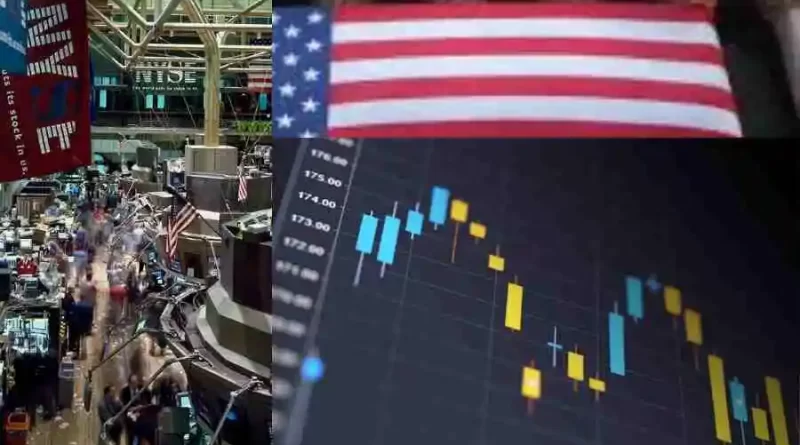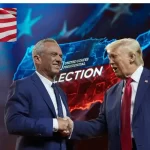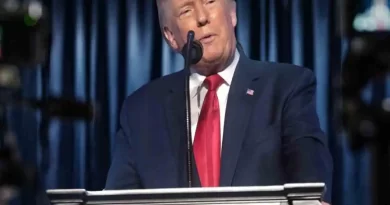Trump’s Policies: Inflation’s Impact on Consumers
Possible tariff rise in January prompts US consumers for higher inflation expectations
Though some inflation is said to be good for the consumers, it takes the sheen away if it goes overboard. And this is what has happened this time with the expectations of a higher inflation rate in the US markets.
There is a strong reason why it is good for them, including a rising economy and expanding businesses. This is what makes the companies hire more workers and raise their salaries. Nevertheless, higher inflation also translates into retirement investment and emergency savings going haywire.
It all started with would-be President Donald Trump’s announcement of the higher tariffs on imported goods. The Surveys of Consumers Director Joanne Hsu has explained that in a more comprehensive way by stating, “For both the short and long run, inflation expectations rose across multiple demographic groups, with particularly strong increases among lower-income consumers and Independents.”
While inflation in the initial 12 months is expected to grow from 2.3% to 3.0%, it might, in the long run, go beyond that. From a mere 2.3% rise in May to a 2.8% rise in December, it has reached the 3.3% expectations mark in January. The announcement might raise the overall prices for household items.
Besides this, there are concerns regarding the higher price index changing consumer sentiments, which had increased after the Trump victory. Even in 2022 and 2023, there was a 5.25 percentage hike linked to the expectations of a possible inflation rising graph.
Even if the Fed has lowered interest rate by 100 basis points, expectations are at a high amongst Economists regarding the overall maintenance of a 4.25%-4.50% range by the Central Bank.
This is expected to be through the first half of the year and afterward, the organization is indicating lesser interest cuts. A hike in inflation is expected to add labor market strength through these steps.
Trump had promised to take inflation before elections
In fact, a promise from the Trump administration to lower the prices had turned the tide in his favor during the Nov. 5 election, with a backdrop of public anger over the high price rise.
The increase on a monthly basis in the overall price index can also, in a way, provide consumers with a look at the factors triggering them. Fluctuations in the increase or decrease can show up like a particular item price, whereas in reality, it might be lowering down, particularly if the index remains unchanged throughout the year.
An apt instance in this case is the energy price rise to 3.5% through a 12-month span, which is low by any means, especially when there was a 2% decrease over the month.
However, a bit of satisfaction can be had from the seasonal jumps in the services like the hotel and motel prices, which are commonly attributed only to the holiday travel season. Another instance is of an organization like BLS which isn’t much into adjusting each item, as the inflation rate increases at the end of the year can better take care of that situation.
As of now, BLS out of nearly 400 items has increased prices on about 2 out of three, which corresponds roughly to a 68% increase between November 2023 and 2024.
Starting from energy, food, and other goods, after the Pandemic, the inflation rate now is seen hiking in areas like car insurance, shelter and transportation. In the case of food items, despite misgivings amongst the consumers, like the soaring egg prices with a massive 37.5%, the Bureau of Labor Statistics has its own yardsticks for assessing the price rise by assigning overall weight to each item, based on the importance of that particular item in their budget.
And it is a fact that there would have still been an increase in the prices of other goods excluding the above ones, for about 1.8 percent. That would have been still less than the preferred mark of about a 2 percent increase affixed by the Federation. Statistics apart, consumers are set to face a deep cut in their pockets.
A realistic price rise analysis by the Bankrate analysis of Bureau of Labor Statistics data shows that there has been a 22.1 percent increase in the items purchased. For instance, during the recession following the Pandemic, consumers purchased goods within a budget of an allocated $1,000, and now the same will need to be bought for an amount of $1,221.
This could mean a possible downswing for the upcoming Trump administration as far as the popularity index is concerned. Johnny Sawyer, Senior research manager at Ipsos factually states “The decline in sentiment is driven by diminished comfort making both major and household purchases, as well as decreased confidence in investing in the future, and an uptick in the number that have lost their job.”
Trump, besides promising higher tariffs on imported goods had also added expectations about deporting millions of undocumented immigrants. These steps, though, were thought to trigger inflation by the Economists in the long run.
Emphasizing the same, the Surveys of Consumers Director Joanne Hsu said, “For both the short and long run, inflation expectations rose across multiple demographic groups, with particularly strong increases among lower-income consumers and Independents.”
Talking in the same vein, Oliver Allen, senior U.S. economist at Pantheon Macroeconomics says, “We see evidence in this survey that consumers expect tariffs to raise the prices of many types of goods.
Reading between the lines, worries about the potential impact of some of Donald Trump’s economic policies seem to be denting confidence too.” As per Sawyer’s statement, “It remains to be seen if this month’s decline is the start of a downturn or just a blip on the radar.”








